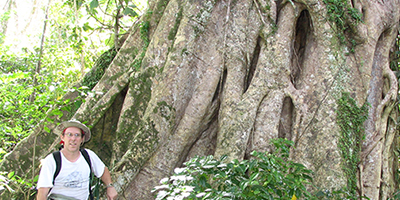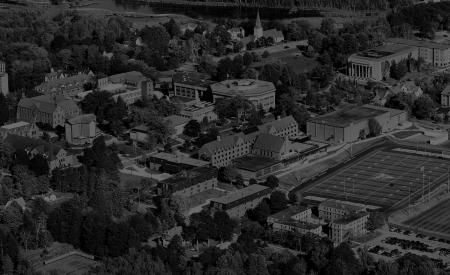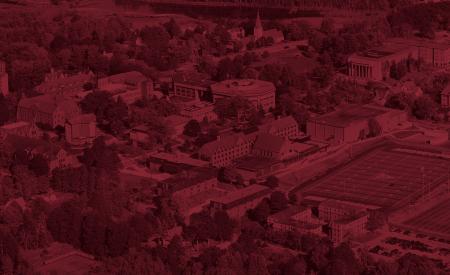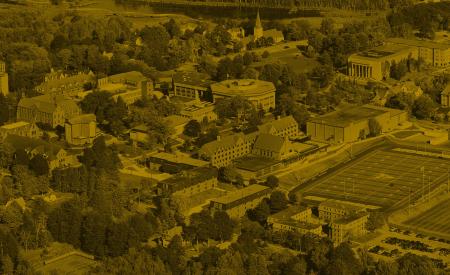5Q with geography and environment professor Dr. Brad Walters
 1- Your human environment research is based in the Caribbean. What made you decide to work in this geographic area?
1- Your human environment research is based in the Caribbean. What made you decide to work in this geographic area?
I have some history there. When I was finishing my master’s degree back in 1990, I got an internship with an environmental NGO based in Saint Lucia. I spent eight months working there and really loved being in the region. After that I didn’t go back for 15 years, but when I finally did in 2005, I discovered that the difference from when I was last there was huge. There was massive spread of residential development along the coast and inland along the watersheds on the one hand and extensive decline of agriculture and reforestation in the uplands on the other. When I was there in 1990, banana farming was at its historical peak. People were farming deep into the mountains and there were widespread problems with deforestation, pesticide contamination, and soil erosion. By 2005, many of these problems were no longer present. Understanding these dramatic changes presented itself as a really cool research project.
2- Your approach to this research is innovative. Can you describe it?
I am trying to resolve some of the analytical challenges of doing human environment research where one is faced with integrating social and natural science information. Lots of people have been wrestling with how to do that in different ways. Working with a colleague from Rutgers University, Pete Vayda, we developed a somewhat novel approach to doing this. I say somewhat novel because what we are doing borrows heavily from writings in the philosophy of science and the philosophy of history. In short, we have developed a methodology for analyzing human environment issues using a ‘causal-historical’ approach.
3- Can you describe an example?
If you consider research on land-use change, where they commonly study things like deforestation or shifts in agriculture from certain crops to other crops, or urbanization and suburbanization and how that spreads into agricultural landscapes, it is typically done using quantitative methods and statistical models.
My approach is somewhat different. It makes use of statistical tools, but in a much more modest way. I look at the reforestation of the rural countryside in Saint Lucia and ask why that is happening by looking at this as essentially a historical phenomenon. I draw on all types of qualitative and quantitative information to gain an understanding of this. It is very interdisciplinary, but the value of a causal-historical approach is that it enables one to tie all these diverse pieces together into an analytically coherent story.
For example, my research shows how policy changes related to trade in agricultural commodities and World Trade Organization rulings relating to the global trade in bananas has consequences for changing prices in banana exports. That in turn caused widespread abandonment of banana farming and reforestation across Saint Lucia’s rural countryside.
But the approach also allows me to show that wider changes in the Saint Lucia economy, including the rise in tourism, urbanization, and residential development, have reinforced a shift away from agriculture to service-sector employment. What you see is a number of intersecting causes coming together and influencing these changes in different, but reinforcing ways, over a roughly half-century period. The net result is an overall decline in agriculture and an island-wide landscape that is more forested today than it has been for at least a century.
4- You recently published a paper on your work on methodology with a case study of Saint Lucia. Why is this paper getting so much attention?
The methodological work that I have been doing with Pete Vayda has long garnered attention. We have questioned a number of conventional schools of thinking in human environment research. The nice thing about this paper, unlike our previous writings, is it provides the most compelling empirical demonstration of our methodology yet.
5- So where do you go from here?
Because this paper is getting attention, I have already been approached by scholars and been invited to present at several institutions in Europe, including the University of Lisbon, Humboldt University in Berlin, the Museum of Natural History in Paris, and the Swiss Federal Research Institute in Berminsdorf, Switzerland where they are doing land-use change research. I welcome any excuse to travel in Europe, so this should be a lot of fun.
I am on sabbatical this term and plan to finish off a book on the Saint Lucia work and also develop some new research initiatives. Some things I am currently thinking about are doing an expanded study of tree crops in the Caribbean or, alternatively, looking at the human aspects of forest fires in Portugal.




